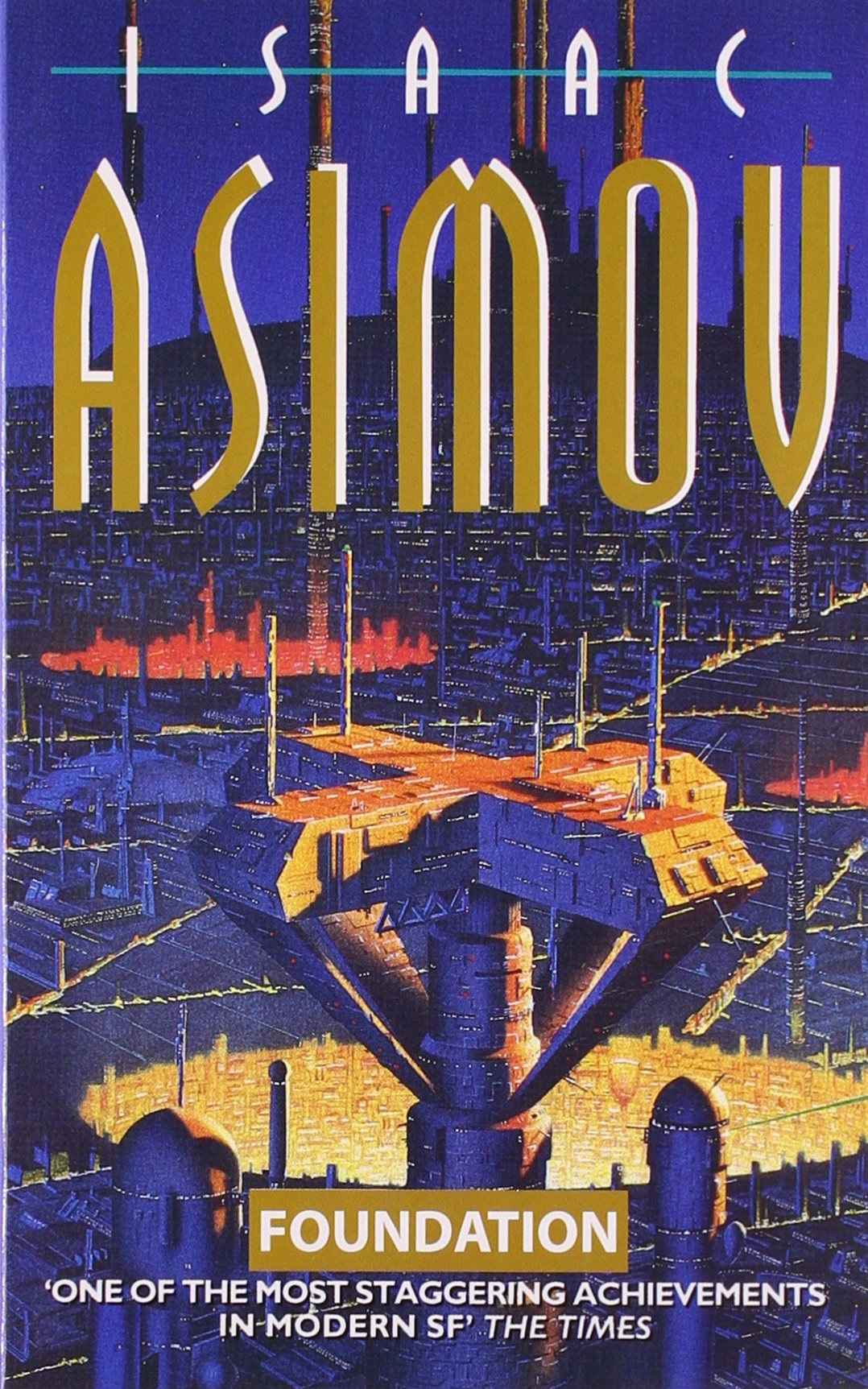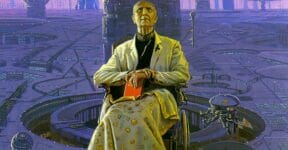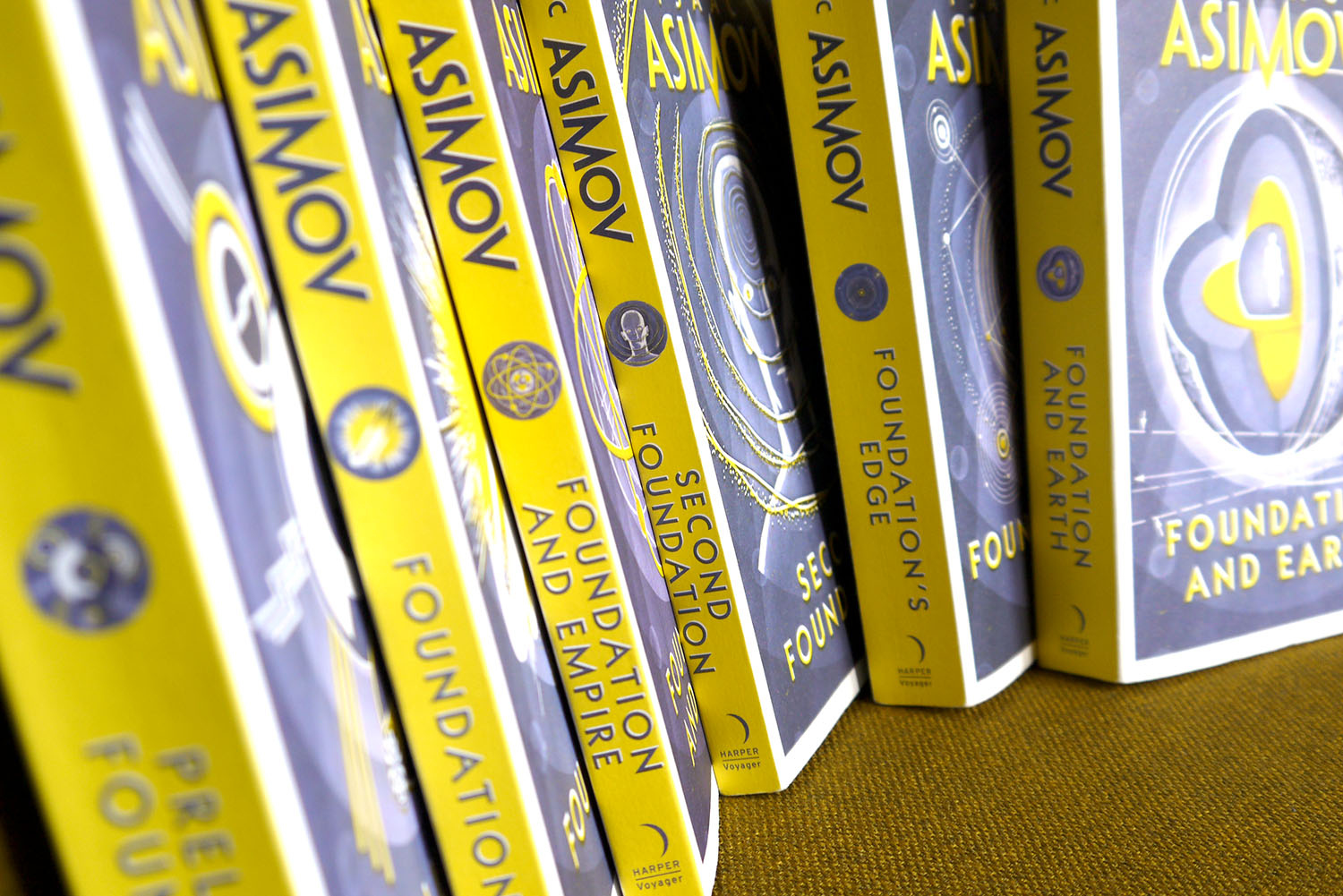Foundation, the first volume of the Isaac Asimov Foundation trilogy, is a collection of five short stories. Four of them were originally published in Astounding Science Fiction from 1942 to 1944; another part was added later for Gnome Press in 1951, the same year that the stories were published as a single book. Chronologically, the novel marked the beginning of the legendary Issac Asimov Foundation series consisting of seven volumes in total.
Premise
The five stories chronicle the creation of the Encyclopedia Galactica Foundation to preserve human knowledge before the demise of the Galactic Empire. While the stories are set entirely in a fictional universe of the distant future where humans have colonized the Milky Way, much of the premise of Foundation is based on ideas observed in the History of the Decline and Fall of the Roman Empire (1776–1789) by Edward Gibbon.

Isaac Asimov Foundation can be divided into five major chapters as follows:
- The Psychohistorians
Hari Seldon, the main character, has perfected an advanced mathematical method known as psychohistory to predict the behavior of a large population across centuries. Based on his calculations, the Galactic Empire will fall within the next 300 years followed by 30,000 years of chaos. He proposes the idea of creating the Foundation to keep records of the entire human knowledge in one secure place. The prediction also says that the chaos will be reduced to a mere thousand years if the Foundation is established before the fall.
Although the Empire considers Seldon’s prediction a form of treason and sends him into exile on Planet Terminus, he is allowed to execute his plan. Secretly, Seldon also intends to build the Second Foundation somewhere at the other end of the known galaxy.
- The Encyclopedists
About 50 years into the exile, Seldon’s followers (referred as to the encyclopedists, and everyone is a scientist) reside in Terminus City – the only inhabitable place on the entire planet. Seldon himself is no longer with them, but it doesn’t matter because psychohistory predicts far into centuries ahead, allowing him to prepare for everything. In fact, he has pre-recorded holographic messages containing up-to-date advice for future societies. All messages are kept in the city’s Time Vault.
Terminus has transformed into a full-blown science-based community and surpassed the technological advances of other places in the galaxy. To oversee the encyclopedists is The Board of Trustees of the Encyclopedia Galactica Foundation. There are also the “Mayors” to keep the city in order. Salvor Hardin is the first and current Mayor of Terminus. Up until this point, one of Hardin’s biggest contributions to the Foundation is stopping an attempt by the neighboring Four Kingdoms to establish a military base in Terminus and take advantage of the city’s nuclear arsenal.
Since the Galactic Empire is now in the predicted chaotic era, Hardin wants to establish an independent stable political system on Terminus. The only thing standing in the way is the Board of Trustees, so he plans to strip them of any political power by force. A holographic message from Seldon played on the same day as the attack, reveals that the Foundation is only the first step to establishing the Second Galactic Empire.
- The Mayors
Consolidation of the mayoral power in Terminus makes way for the indirect use of science for political purposes, in a good way. As foreseen by Seldon with psychohistory, the lack of scientific progress across the rest of the empire provides an easy gateway for Terminus to indoctrinate the population with a new religion called “Scientism.” The teachings involve sharing technological products with the population and other kingdoms but deliberately keeping the more advanced knowledge secret. Priests are maintenance technicians, while the most educated scientists are appointed as ambassadors to the Four Kingdoms.
- The Traders
Technological superiority establishes the Foundation as the dominant power. In exchange for shared technology, the Foundation has spread significant economic, political, and social influence over other planets. Standing at the forefront of the escalating dominance are the Traders, comprised of the Foundation’s socio-economic citizens; they are the working class, tasked with intensifying the Foundation’s influence throughout the galaxy. Among all the Traders in action, Linmar Ponyets stands out as an instrumental agent. In certain areas and planets where actual religious fundamentalism blocks the Foundation’s advances, Ponyets organizes a more freeform approach; for example, he bribes the bureaucratic leaders of Planet Askone to incorporate Scientism into their belief system.
- The Merchant Princess
Three ships belonging to the Foundation disappear near the Republic of Korell. It is possible that the republic is developing advanced technology on its own, threatening the Foundation’s dominance. The Foundation sends a Master Trader named Hober Mallow to investigate the matter. He discovers that the Republic of Korell is receiving technological and military aid from the old Galactic Empire, whose power has been largely considered diminishing for more than a century. The revelation would determine the Foundation’s next strategy to sabotage the resistance.
Mallow also successfully prevents a political coup in the Foundation, where some Scientism fundamentalists attempt to disgrace the Traders. Thanks to his achievements, Hober Mallow is elected Mayor of Terminus and named the High Priest of the Scientism Religion. When the Republic of Korell declares war on the Foundation, the Mayor imposes an embargo and forces the enemy into submission. This is the turn of events that marks the end of the Scientism-based political practice and changes into a plutocracy.
To state the obvious, Isaac Asimov Foundation is an ambitious novel. It covers an entire galaxy to form a story and the plot takes hundreds of years to unfold. The good thing is that the book is structured like a collection of snippets so that each snippet focuses on a specific period and people and is easy to follow. The novel has no clear-cut protagonist. Hari Seldon appears like it in the beginning, but soon enough Salvor Hardin takes the place of a hero before Hober Mallow practically wins the galaxy. The main character in Foundation is society itself and how it changes over the course of a problematic era.
Have you read the Isaac Asimov Foundation? Do you think the novel has stood well against the test of time? We’d love to hear from you.
Other things you might want to know:
What are the other books in the Foundation series?
Foundation is the first of the Foundation series books. By order of publication, the other six volumes are:
- Foundation and Empire (1952)
- Second Foundation (1953)
- Foundation’s Edge (1982)
- Foundation and Earth (1986)
- Prelude to Foundation (1988)
- Forward the Foundation (1993)
Have the stories been adapted to the screen?
Initially thought of as unfilmable, there is now a TV series based on the first novel streaming on Apple TV+.
What are Isaac Asimov’s Three Laws of Robotics?
- A robot may not injure a human being, either through action or inaction.
- A robot must obey orders by a human, except when such orders conflict with the First Law.
- A robot must protect its existence, as long as the attempt to do so does not conflict with the First or Second Laws.
Check out other articles by month:







